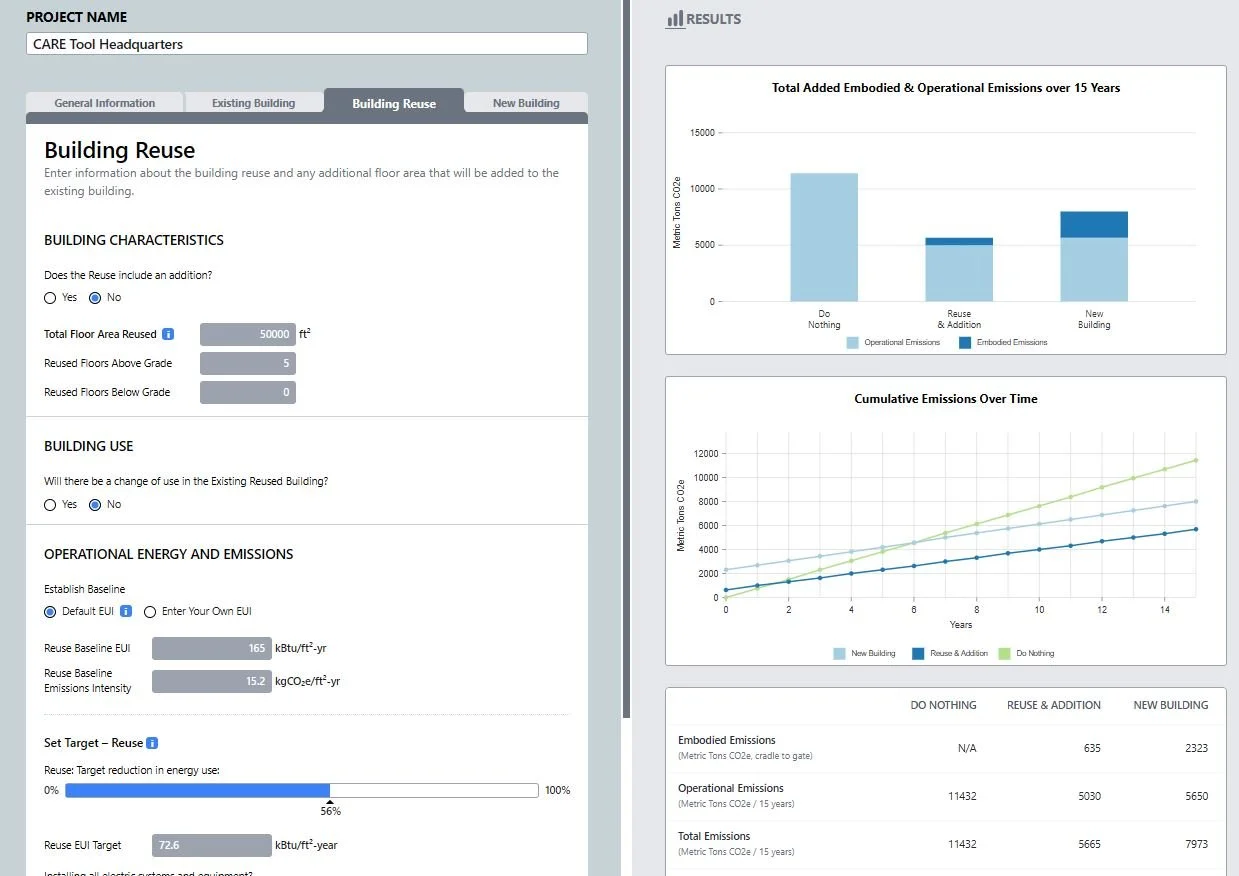
CARE Tool
Carbon Avoided Retrofit Estimator
Project Partners: Architecture 2030, Larry Strain
Project Funders: 1772 Foundation
Project Type: Online tool
Keywords: embodied carbon, operational carbon, avoided carbon, retrofit
overview
The CARE (Carbon Avoided: Retrofit Estimator) Tool is used for estimating and comparing the embodied, operating, and avoided carbon impacts and benefits of reusing and upgrading existing buildings or replacing them with new construction. CARE is the first tool that uses high-level inputs to generate valuable, early decision-making information about and when and how building reuse is the right carbon decision.
CARE has been used been used by over 10,000 architects, engineers, preservationists, building owners, advocates, educators, students, and others to evaluate the carbon emissions of reuse compared to new construction.
How can CARE help?
CARE Tool is designed to be flexible so that users can generate the information they need. Here are a few ideas:
A building owner may estimate how much carbon they can save by reusing and upgrading an existing building compared to replacing it with new construction.
An architect in early design can explore different approaches to reuse to set targets and minimize the project’s carbon footprint
A designer wants to start carbon modeling early with CARE and transition into a detailed LCA later in design.
Students want to learn about whole life carbon and explore the impacts of reuse on built environment emissions.
An advocate wants to demonstrate the value of a significant existing building to make the case for its retention and reuse.
Portfolio managers or campuses want to align their facilities management practices with carbon neutrality target by understanding the whole life carbon of life cycle building use.
How CARE works
Users input information in four categories:
General project information such as location and study duration
Existing building information, including building size and use type(s).
Building reuse information using drop-down menus to describe scope, such as percentage of structure upgraded or interior finishes retained; information about building additions constructed as part of a reuse scenario; and energy and emissions targets and projections.
New building information based on typical construction typologies, and energy and emissions targets and projections for the new building.
Based on this information, the tool calculates embodied and operational emissions and generates two graphs illustrating total emissions and emissions over time for the existing building, reused building, and new building scenarios.
What’s next for CARE?
The CARE Tool team is currently working to enhance and expand the tool to better support portfolio owners. One goal of the tool’s development is to enable policies in climate action planning and regulation that integrate the avoided emissions of reuse. This phase of development is focused on building out the capacity for CARE Tool users to assess multiple buildings to inform their capital, economic, and climate planning. Stay tuned for updates through 2026.


